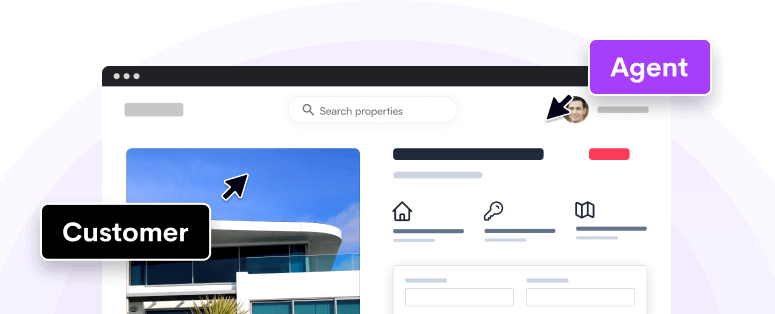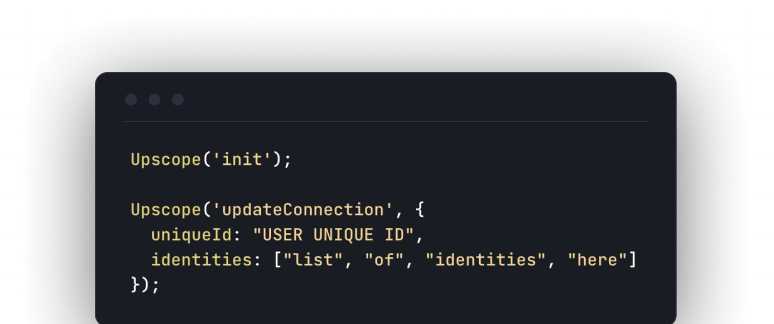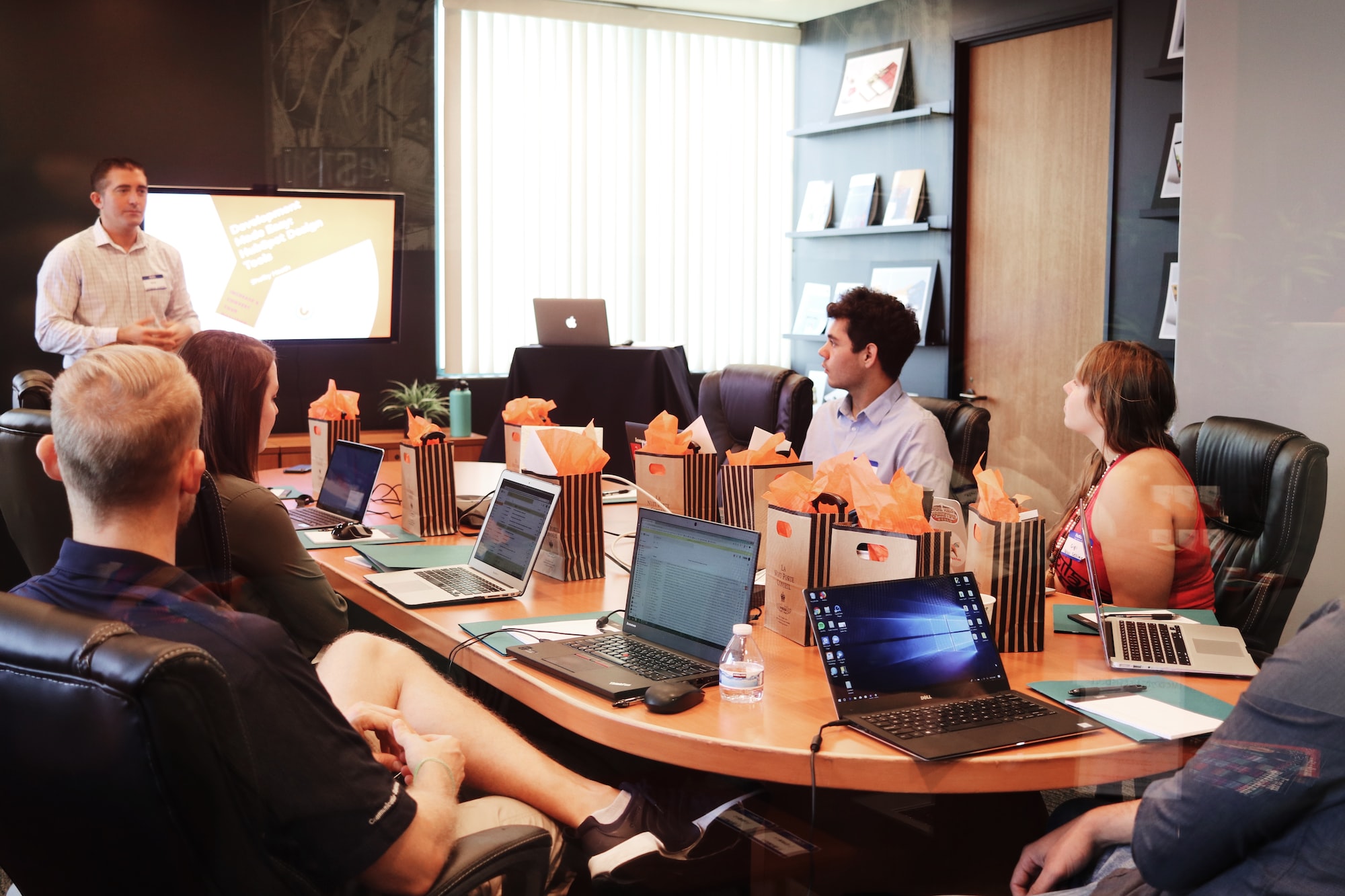If you could 3X the speed of effectively onboarding new employees they'd not
only skip the initial grinding confusing steps of joining a company but also
get on with growing the company. How could onboarding be sped up 3X? We'll
look at obstacles to faster onboarding and then examine the onboarding process
within Upscope and the technology required to make it go faster.
What are the obstacles to a fast and effective onboarding experience?
Company processes are built on hundreds of SaaS apps
There are SaaS apps everywhere. Within a large enterprise there can be over
1,000 SaaS apps in use. Within even a medium sized company any single employee
can be working across 15 to 20 apps in a day.
Onboarding needs to be custom fitted
Each person requires a different process depending on the department they are
in and even down to their unique personality.
Why do some developers hate meetings? They love to code. It's fun building
things. They are primarily excited about getting on with building things using
the latest tech. We'd need to connect the company vision and principles to
that core desire so they can adapt or adjust.
Some people are more concerned with health insurance than when the next
company retreat is or what other work life balance options there are. They
need the emphasis put on this during onboarding.
Each SaaS app needs its own custom onboarding
Salesforce: You might be familiar with Salesforce but are you familiar
with how we've set up Salesforce? Are you familiar with all the integrations
we use and how they work? Each implementation is different and requires
teaching.
Traffic analytics: When someone arrives in marketing and is shown the
current traffic analytics, there are a number of false positive sources that
need to be explained. They may be familiar with Google Analytics but they
won't be familiar with the traffic sources and what they mean and what should
be ignored.
It's hard to prove if onboarding has been successful
How do you measure if employee onboarding worked?
Some companies end onboarding with quizzes but does that really prove progress
and an understanding of mission, vision and values? What might be needed at
the end is that they record a video of themselves explaining what they
understand the mission, vision and values to be and others respond with their
interpretation. It needs a conversation.
It's tough to make values translate to specific actions
You can say that you're customer focused but what does that mean during an
individual conversation with a customer? If they ask for a refund and they're
outside of a refund period then do you do it? If they missed a recent discount
period then do we give it to them anyway?
I'm not even sure if this is part of onboarding or on-going training in a
department. Ideally, anyone joining will understand the principles we operate
with early on and this is something most companies struggle to implement into
a culture.
Upscope apps and onboarding steps
Below we'll cover some of the apps we need to onboard Upscopers to and then
cover a theoretical solution to onboarding obstacles so that it happens fast
and effectively.
Default for everybody
Sign contract, NDA - these are done on google docs
Confirm which Mac you want along with equipment - via email sent to tech
team
1Password - set up your 1Password account so you can securely log into
applications. It will generate a unique password for each app.
Security software setup - Download and install the key apps we use to
maintain security
Security training in Drata - using the Upscope SOC2 Drata app complete
security training and read through all key information system security
policies and sign off that you understand them.
Enter any holidays in Notion - enter any upcoming holidays into the
company or departmental calendar in Notion.
Get added to company Slack channels - see the key Slack channels you can
or should participate in. These include department specific channels but also
company wide, social water-cooler type channels. There are rules around using
threads which need to be explained so the channels don't get cluttered.
Get familiar with the company handbook - see the company handbook in
Notion where you'd watch videos on the company history, see the department
specific FAQs and the core mission and vision docs.
Request invites to key meetings - here you'd need to request access to all
the key company and departmental monthly meetings as well as the random
watercooler chats.
Apps used just in the marketing department
We'll cover just marketing for now but as you can imagine, each department has
a dozen or so apps they might be working across.
SEMRush for SEO - if you have not used it before there's a real art to
using SEMRush as an SEO keyword tool in combination other apps and Upscope has
it's own set of core keywords that are important to focus on at any one point.
For example, it would be easy to damage our SEO ranking by messing with some
blog posts so this needs to be explained to anyone editing the blog or writing
new posts.
Google analytics - Google analytics is not used as much as before but it
still provides critical in-depth information which is difficult to surface via
other tools.
Ghost for the blog - the Ghost blog tool is simple enough but we also have
built in custom adverts which require time to learn and it can easily go wrong
so it needs careful testing.
Google search console for keywords - this needs to be used together with
SEMRush to really understand how and why we're ranking for certain keywords.
There are some false positives to explain e.g. our top 20 keywords might
relate to 'Go to marketing' and that would appear strange at first and needs
explaining as it's due to one very successful post that is crowding out the
rest of the keywords.
Oribi for funnels and traffic analysis - this is an extensive tool for
which we've barely uncovered most of the benefits and some of the funnels
we've set up need to be carefully evaluated as the reason one funnel might
indicator better than expected results is due to a peculiarity of that one
particular page it starts from.
Writing style guide - we have a style guide which indicates how to spell
or capitalise certain words. It explains the casual tone we take in writing
and how we avoid unnecessary long words if we can.
Intercom for accessing outgoing drip emails - Intercom is our support
chat, help article tool and email marketing tool all in one. Anyone in
marketing will have to access Intercom and understand it, especially the email
module where we'd send out sequences of emails to new customers.
Slack channel with customer interviews - to fully understand the market
it's best to start by listening to customers and so going through all the
recent customer interviews along with the notes recorded there. Within those
conversations are the topics for our future posts and also an understanding of
how people feel when working with Upscope.
Learn basic programming via CodeAcademy- we tend to push everyone to
learn basic coding using html, CSS and javascript part time over weeks because
Upscope (in the past) needed customers to install a javascript snippet.
Understanding how that worked was necessary across departments and also it's
fun to learn about how the web is built if you'll be working on it... forever.
How do we go about onboarding someone at Upscope?
-
We're able to assign someone to onboard each person.
-
The tech team take care of key app permissions.
-
The individual's department would take care of key department specific app
permissions. -
The most qualified person would take the new person through the application
they're most qualified to talk about because, for example, marketing may not
know Intercom inside out but the support or tech team does. -
We'd talk them through how we work as a team, how we support customers, who
the other team members are, what they're like, what each person works on. -
After that it would be done on the fly. Cultural interactions, a weekly
book club, one to one chats would help slowly help disperse our principles.
Even if they have experience, there is a world of difference between the go to
market process of Upscope vs another SaaS company let alone outside of SaaS.
Understanding how the company works, the market we're in and our history is
important background to how we use individual apps and what to look out for
within the data. Then there are unique sets of currently undocumented
principles we work by.
What's the futuristic way to onboard employees?
We can, at the very least, improve the speed at which we effectively onboard
someone to apps if not yet the cultural aspects.
Let's say I'm the employee who is onboarding our new remote employee Jack.
-
First, I'd send Jack my universal co-browsing link.
-
After Jack clicks it we'd end up seeing and browsing the same page
together. -
Rather than me talking at Jack or Jack watching my screen trying to learn,
we're simply completing the onboarding together by completing forms and
talking through each section as we do so.
Upscope universal co-browsing looks a bit like the picture below where both
the customer and the support agent are seeing the same page and seeing each
other's mouse cursors. They can both click, type and scroll on the same page.

4. I'd take Jack to our equipment google doc and he'd fill in the form for
ordering his new Mac, keyboard and track pad. I'd explain the benefits of each
type of Mac he could order and why the separate keyboard and trackpad are
useful. I'd also suggest ordering a second screen if he has not got one. I'd
fill in the correct name of the Mac if he's not aware of it or he'd fill it in
himself if we did know.
5. I'd then change the URL to Drata.com and both our mouse cursors would
appear on that page. I'd ask him to fill in his email and password that the
tech team has given him. I'd scroll and click through to the security training
section and tell him to complete the training course.
6. After he's completed security training I'd want to show him Slack, Notion
and all the key channels and information pages. Each time I'd be changing the
URL, talking him through the purpose of each app and we'd fill out the key
information together as we spoke.
Using Upscope universal co-browsing we're now more than halving the onboarding
time by 'doing' rather than 'teaching'. Typical screen sharing involves the
employee talking to Jack and Jack trying to take it all in, taking notes and
trying to follow instructions. Now, with universal co-browsing, every step is
a completed action.
What's the automated version of universal co-browsing?
We could go even further and have a recorded interactive video which can be
used 100s of times for new employees rather than trying to repeat the same
process manually again and again one to one.
There's a great deal of innovation coming in employee onboarding and we
believe that "learning" will, in many cases, be replaced with "learning by
doing".






